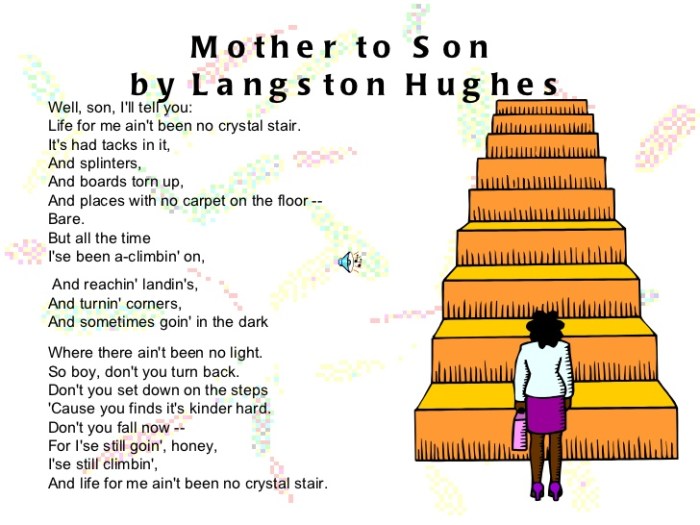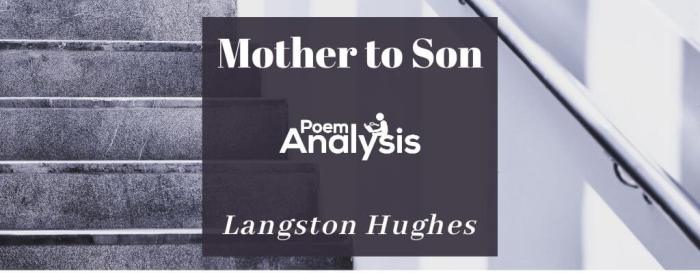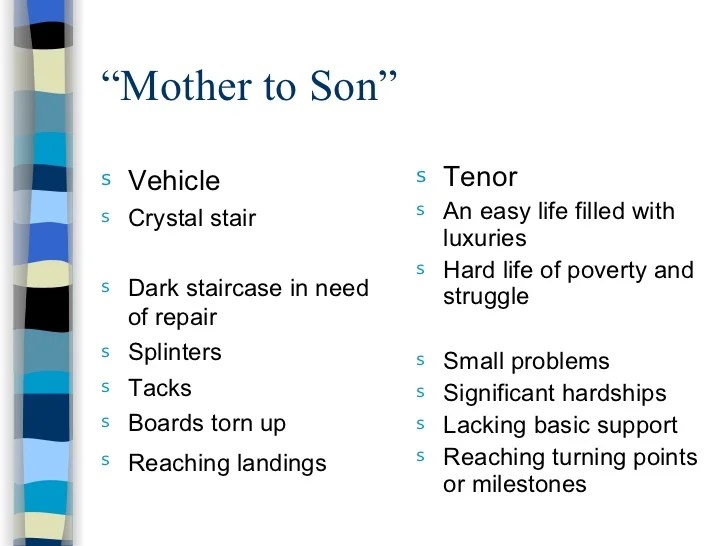Figurative language in mother to son by langston hughes – Figurative language in Langston Hughes’s “Mother to Son” weaves a tapestry of meaning, enriching the poem’s exploration of resilience, perseverance, and the enduring bond between mother and child.
Hughes’s masterful use of metaphors, symbols, imagery, and other literary devices invites readers to engage with the poem on multiple levels, enhancing their understanding of the mother’s experiences and the broader themes it conveys.
Overview of Figurative Language in “Mother to Son”

Figurative language is a literary device that uses words or phrases to create a vivid or imaginative effect. It enhances the meaning and impact of a text by using language in a non-literal way. In “Mother to Son,” Langston Hughes employs various types of figurative language, including metaphors, symbols, imagery, and personification.
These literary devices allow Hughes to convey the mother’s experiences and emotions in a powerful and engaging manner, enriching the reader’s understanding and appreciation of the poem’s message.
Analysis of Metaphors in the Poem, Figurative language in mother to son by langston hughes
Metaphors create a direct comparison between two seemingly unrelated things, enhancing the reader’s understanding by connecting familiar concepts to abstract or unfamiliar ones. In “Mother to Son,” Hughes uses several striking metaphors to convey the mother’s journey and struggles:
- “Life for me ain’t been no crystal stair”
- “I’ve had my share of cobblestones”
- “But all the time I’se been a-climbin’ on”
These metaphors effectively portray the mother’s life as a challenging path, filled with obstacles and hardships, yet she remains resilient and determined.
FAQ Explained: Figurative Language In Mother To Son By Langston Hughes
What is the significance of the metaphor of the “crystal stair”?
The “crystal stair” symbolizes the challenges and obstacles that the mother has faced in her life. It represents the difficulties she has overcome and the resilience she has developed.
How does the use of symbolism contribute to the poem’s emotional impact?
The symbols in the poem, such as the “dark road” and the “worn-out hand,” evoke a sense of hardship and struggle. They help readers connect with the mother’s experiences and empathize with her journey.

